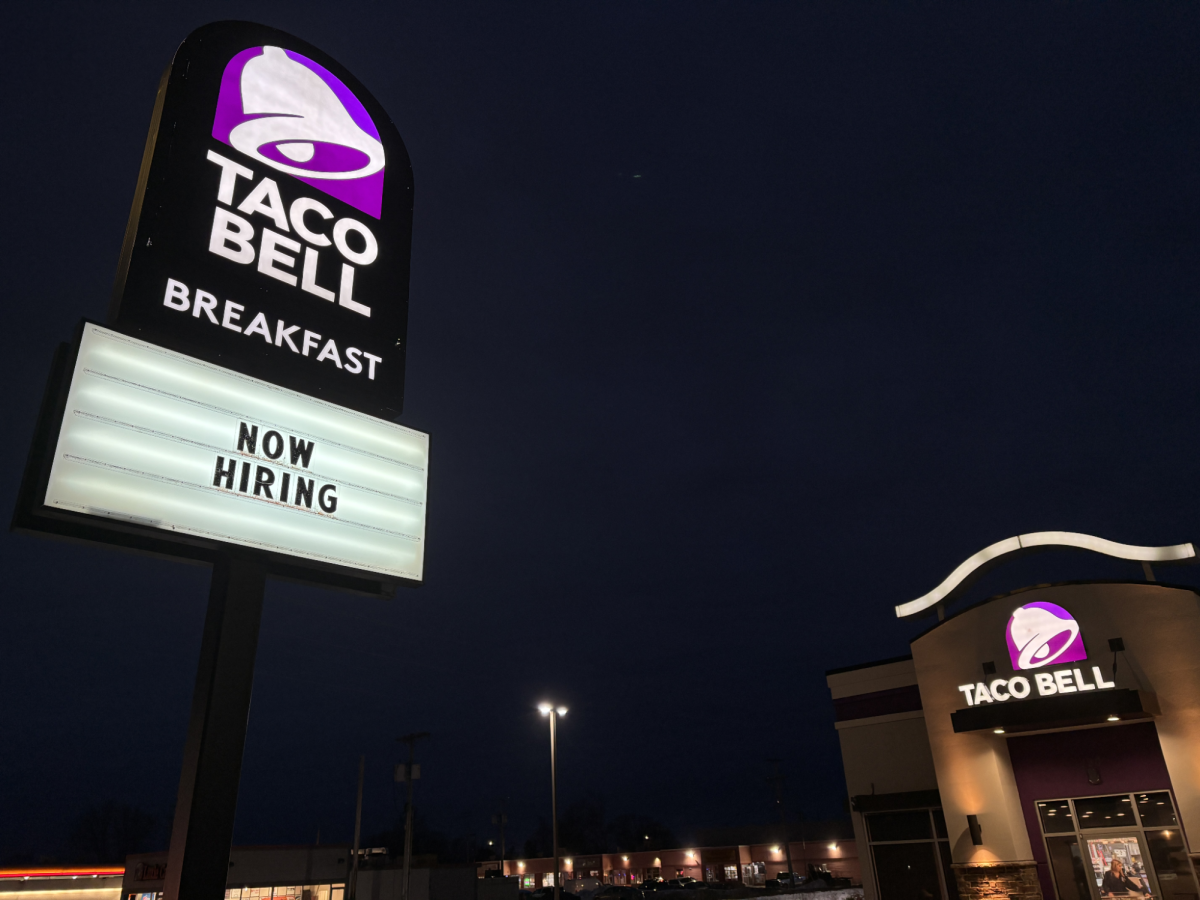At 12:05 P.M., Kylie Kruitoff climbs into her car and gets into a line of seniors. She trails behind a red Buick and a Toyota Prius, with a Jeep Wrangler hot on her tail. After a four-and-a-half-minute drive, she pulls into the drive-thru line, orders from the speaker, and pulls forward to the next window. She’s still sandwiched between the same red Buick and Jeep Wrangler from before. West Ottawa seniors wrap around the building, all ordering Crunchwrap Supremes, Nacho Fries, and Baja Blasts.
Since its creation in 1962, Taco Bell has had its ups and downs. It originated in Southern California and has since grown into an international chain, with over 8,500 restaurants operating globally in 2024. Taco Bell exploded in the late ‘80s and ‘90s but faced heavy public scrutiny in the mid-2010s. However, it’s making a comeback – this time with a younger audience.
A closer look at Taco Bell’s sales over the past few years reveals this increase. From 2013 to 2017, sales slowly crawled from around $8 billion to $11 billion, and remained stagnant until the dip in 2019, before recovering in 2020. This slow growth is notable in a fast food chain as large as Taco Bell. However, from 2020 to 2024, Taco Bell jumped from 11 billion to a whopping 16 billion in sales.
“I don’t mean to be crass, but ten years ago all my students called it Taco Hell,” Instructor Erin Stier said.
Prior to 2020, Taco Bell had the reputation for poor food and even worse health consequences, with frequent complaints about stomach problems and trips to the bathroom. The chain was famous for low-quality ingredients and poorly made meals. Jr. Olivia Plaggemeyer said, “I actually used to not like Taco Bell because it gave me food poisoning. But now I love it!” The stigma surrounding the fast food chain has clearly dissipated, so what’s the reason for the shift?
The reason is certainly not the quality of their food. In fact, West Ottawa students claimed that they believed the quality of Taco Bell’s food had actually decreased slightly over the past few years. Students also claimed that the quality of service had also decreased. One reason for Taco Bell’s surge in popularity is TikTok. With over 170 million Americans on TikTok, trends on the app can influence real-life patterns. A trend that recently exploded on the app is ‘mukbangs.’ This slightly foul-sounding word originated in South Korea and means ‘a video featuring someone eating large amounts of food and talking to their viewers.’ Numerous videos of TikTok influencers eating Taco Bell menu items in a ‘satisfying’ way has had a large impact on people’s opinions of the food.
Kruitoff said, “Oh, I love mukbangs. I love JellyBeanSweets (a popular mukbang creator on TikTok), I always feel like JellyBeanSweets when I’m eating Taco Bell, so yeah. I really love mukbangs.”
Another major factor is the low cost. With food prices rising, Taco Bell’s affordable options are hard to overlook. It’s possible to walk out of the restaurant with a significant amount of food at a low price. Kruitoff said, “I like how cheap it is. That’s like the biggest thing, I think. It’s the cheapest fast food place.” Finally, another reason for the popularity could be the bandwagon effect. When more and more people hop on a trend and change their opinions, it’s likely others will do so as well. Teenagers are more susceptible to the bandwagon effect than anybody, so it’s possible if their friends change their minds, they will as well. “I think other people did (have an impact). It was kind of like, ‘oh you should try this’ and I was just like ‘okay!’” Sr. Alex Velazquez said.
Taco Bell fanatics and haters alike are faced with a fact: the fast food chain is on the rise once again. Taco Bell has found its way back into the hearts (and stomachs!) of teens. Whether or not this rise in popularity is a passing trend or the start of a new fast food era remains to be seen. Regardless, Taco Bell is seemingly here to stay—at least for now.







